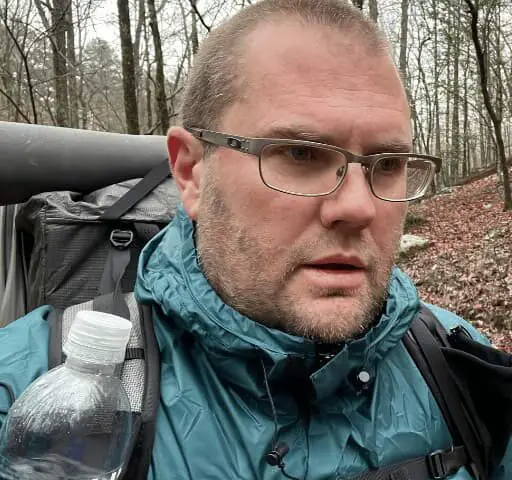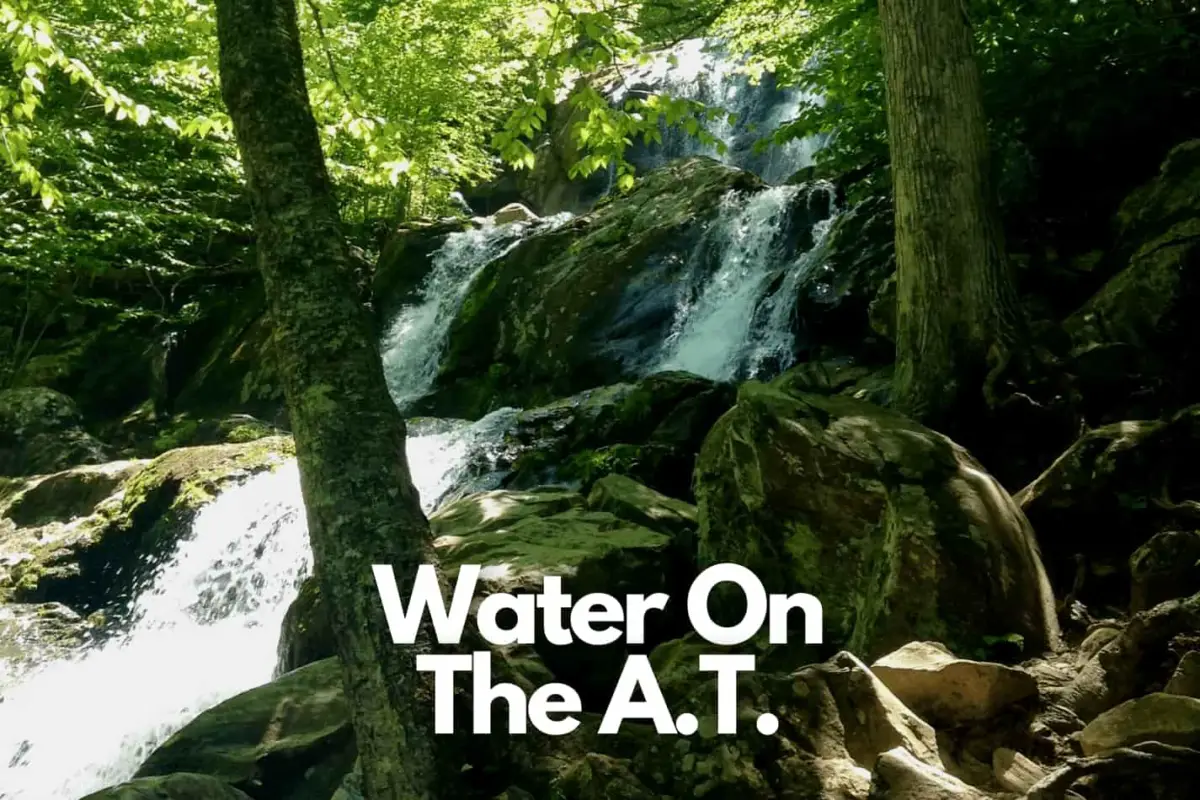It will come as no surprise to anyone that water is the most vital need on the trail, while the Appalachian Trail offers far more access to water than other trails understanding when you need to carry more water and when it needs to be cleaned are vital knowledge to maximizing your enjoyment.
On the Appalachian Trail, you carry water with containers like 1L water bottles, water bladders of varying sizes, hydration bladders, and the ever-living Nalgene bottle. This allows you to manage the total water weight you carry between water sources when on the trail for days on end.
Now that you have a basic answer for how you actually carry the water we can discuss why each of these water carry options is valid and can be beneficial and we will talk about why most bring a filter or other devices to sterilize and filter the water so you stay healthy and strong.
Recommended Water Intake
Under a normal day-to-day life(1), you should consume approximately 2 liters daily. But on the Appalachian Trail, your water needs are going to be different each day.
Every hiker should look to start the day by drinking at least 8-16 ounces before starting the day’s hike, this allows the body to be ready and hydrated for the work you plan to heap on it with 10+ miles per day.
A variety of things will affect how much water you need to drink such as how hot the weather is, how much you are sweating, how active you are during the day, and what altitude you are hiking at.
As to the volume of water to drink for most, you will be heavily sweating and this will dramatically increase water consumption, if it is hot this would increase even more and it is suggested for a heavy activity to drink at least 4 ounces per 10-15 minutes to combat dehydration in steady sipping and not big swigs.
As the temperature goes up though this level may need to increase to near double at 4-8 ounces per 10-15 minutes. I recommend you pair this with high-quality and easy-to-process electrolytes like LMNT, Mio, or similar supplements to get back in the electrolytes you are sweating out.
A good rule of thumb is to drink frequently before you feel thirsty. By the time you feel thirsty, you are already dehydrated.
Keep in mind that water also comes from the foods you eat, at least some of the foods you bring have water content but not your dehydrated foods. While on the trail, you will be eating foods with a high sugar content like bars which have some moisture level to them but won’t satiate real thirst.
The end of a day on the trail should end with you drinking around a liter of water before and with dinner to fully rehydrate before bed, this way you will start tomorrow on the right foot.
Factors That Determine How Much to Carry
This is tricky and will depend on many factors, covered below in more detail, along the trail along with your own personal needs as some people love to continually drink and carry extra for those “just in case” moments and others carry just what they think they need to make it to the next water source.
Some may choose to “camel up” or drink the maximum amount they can directly at the water source to carry less on their back, it is a highly personal decision but with apps like FarOut, the Appalachian Trail is well documented on water sources helping make decisions by knowing the quality and quantity of the next source.
Factor: Availability of Water
There are stretches where water will not be close ahead or where your campsite could be between two water sources meaning you would choose to dry camp or push on if you want better water availability.
While hiking you may choose to skip a water source if you evaluate what you have and how much you have been consuming if you believe you have a reliable water source close enough to make it without too much discomfort.
Factor: Heat and Humidity
The higher the heat and humidity the more you will sweat and the faster you will have to replenish fluids, for this, you will want to carry and drink more water. Humidity will cause sweat to pour out which will just add to your need to take in more water and more electrolytes lost through the sweat.
Factor: Weight
One liter of water weighs in at a very heavy 2.2lbs, it is not something you want to carry any more than you need but in stifling heat, you may want to carry at least an extra liter.
This comes in heavy when you have long dry stretches on the trail as you will have your pack weight greatly increase to ensure you stay hydrated.
Factor: Foods
Protein over the other macronutrients needs more water to process so if you are eating foods that are higher in protein you will want to make sure you have more water available to have with your food for any meals and snacks.
Dehydrated meals will also use your valuable water so if you are eating those for dinner, you will want to make sure you have enough water to cover them as well as plenty to drink.
Methods to Carry Water
There are many ways thru-hikers choose to carry water away from natural water sources, these are all specific to the needs and wants of the individual.
Each of these water containers can fill needs that others can’t and some types people can’t stand and would never use:
1L Plastic Bottle (eg SmartWater, or Similar)
These have become exceedingly popular with thru-hikers as many water filters can easily connect directly onto them making them simple and effective to use while also being near-weightless when empty.
In addition, they are simple to replace in town should you need a new one and can be found at any store from a gas station to a supermarket.
Water Storage Reservoirs
These are the easy-to-carry collapsible water storage options for carrying liters of water. The most common options are the CNOC Vecto 2L Bag or the wider-mouth Hydrapak 2L Seeker, and typically, you would purchase the best match for your water filtration device.
This offers typically wider access to fill from water sources as a normal water bottle has a notoriously small opening making filling it very difficult at times.
These are near perfect for longer water carries as they can help carry non-filtered dirty water for those times where you may need it later.
Hydration Bladder
These appeal to some hikers as the bladder can be kept inside the backpack keeping the weight directly on your back, they also can carry a larger volume of water and with the simple drink hose access to drinking is very easy overall.
The big issues come with not being able to see the amount of water you have left when at a water source in many cases without removal from the backpack to check leading to a lot more work and effort and the chance of running out without knowledge, unlike an external water bottle.
Nalgene Bottle
These used to be the most classic water bottle with hard sides and a small opening at the top, they were bulky but very effective and easy to use. The screw-on cap is also a very secure way to prevent any water loss should the bottle tip over as well which can be important on rocky sections of the trail.
Nowadays they are not used as often but these can be very useful for colder temperatures to help raise temperatures in a quilt or sleeping bag by adding hot water into it to distribute the warmth inside.
Methods of Treating Water
There are many water treatment methods you can choose to use when it comes to drinking water on a longer thru-hike, for most this will be a water filter and a backup option using chemical or boiling to be a failsafe should problems occur.
Filteration
The most commonplace options now are the Sawyer Mini and the BeFree which are small, lightweight, and effective ways to remove all bacteria, protozoa, and viruses from the water making it safe to drink.
These can be used in a number of ways from attaching them to a water bottle or storage bladder or using the provided bag to fill and treat water which can then be poured into whatever container you are using.
Chemical Treatment
This is a very lightweight way to treat your water but it can leave chemical tastes and smells in your water that some people can’t stand. In addition, most chemical treatments take time which means you still may need to wait 30-45 minutes or longer for your water to be safe to drink.
Some of the more common options:
Boiling
If you bring a pot and a stove you can always fall back on boiling your water to make it safe to drink, this is a very effective method but can be time-consuming and will use up your stove fuel.
It is also important to remember that boiling does not remove all particles from the water so if you have sediment in your water you may want to filter it first and then boil it.
Signs and Symptoms of Dehydration
Below are some of the signs and symptoms of dehydration to be aware of while on the trail.
- Thirst
- Headaches, Lightheadedness, Fatigue
- Pungent and Darker-Colored Urine
- Irritability
- Disorientation
- Loss or Poor Coordination
- Stumbling and/or Mumbling
If you are experiencing any of these signs or symptoms it is important to stop and take a break in the shade, drink plenty of water, and if possible, eat some salty foods.
What to do if you Believe Yourself to be Dehydrated
If you believe you are experiencing issues like those listed above then you need to stop and think about the following, are you close to a water source and can drink up or are you a ways off still?
The normal feeling is to panic and rush to the nearest water but it may be better instead to allow yourself to rehydrate and cool off with what you already have on you by following this advice:
- Stop Hiking
- Find Shade and Sit Down to Rest
- Rehydrate with Water and Electrolytes (If Possible)
- Soak Your Shirt in Cool Water if Accessible to Drop Your Body Temperature
- Start Hiking Again Once Symptoms Fade
I don’t think many will ever reach this point but if you do caution is always the best way to prevent further complications.
Final Thoughts on Carrying Water On the Appalachian Trail
Hopefully, you have a better idea now of how to carry water while hiking the Appalachian Trail and how to treat water should you need to.
There are many ways to carry water and each has its own pros and cons so make sure to choose what is right for your personal preference and always think ahead.
If you have any questions or comments please reach out, I would love to hear from you!
Have a great day and happy hiking!


Leave a Comment